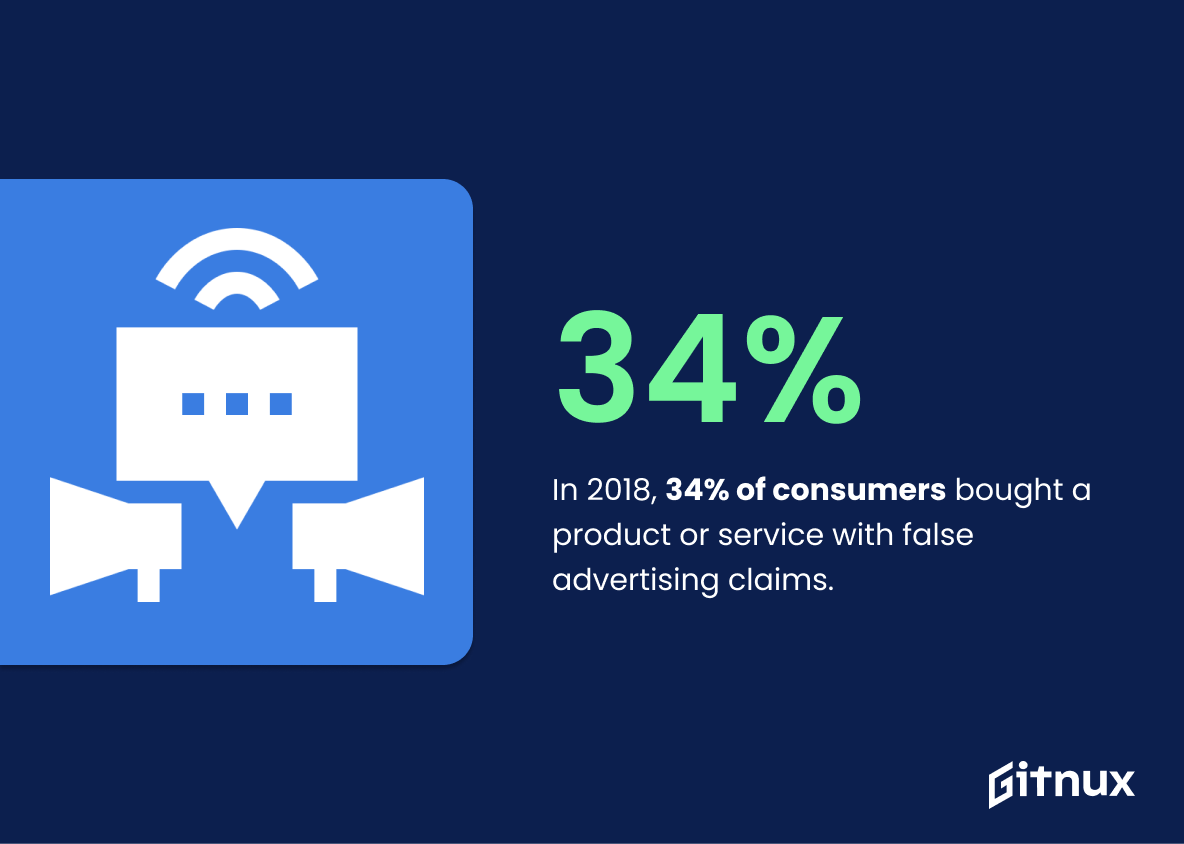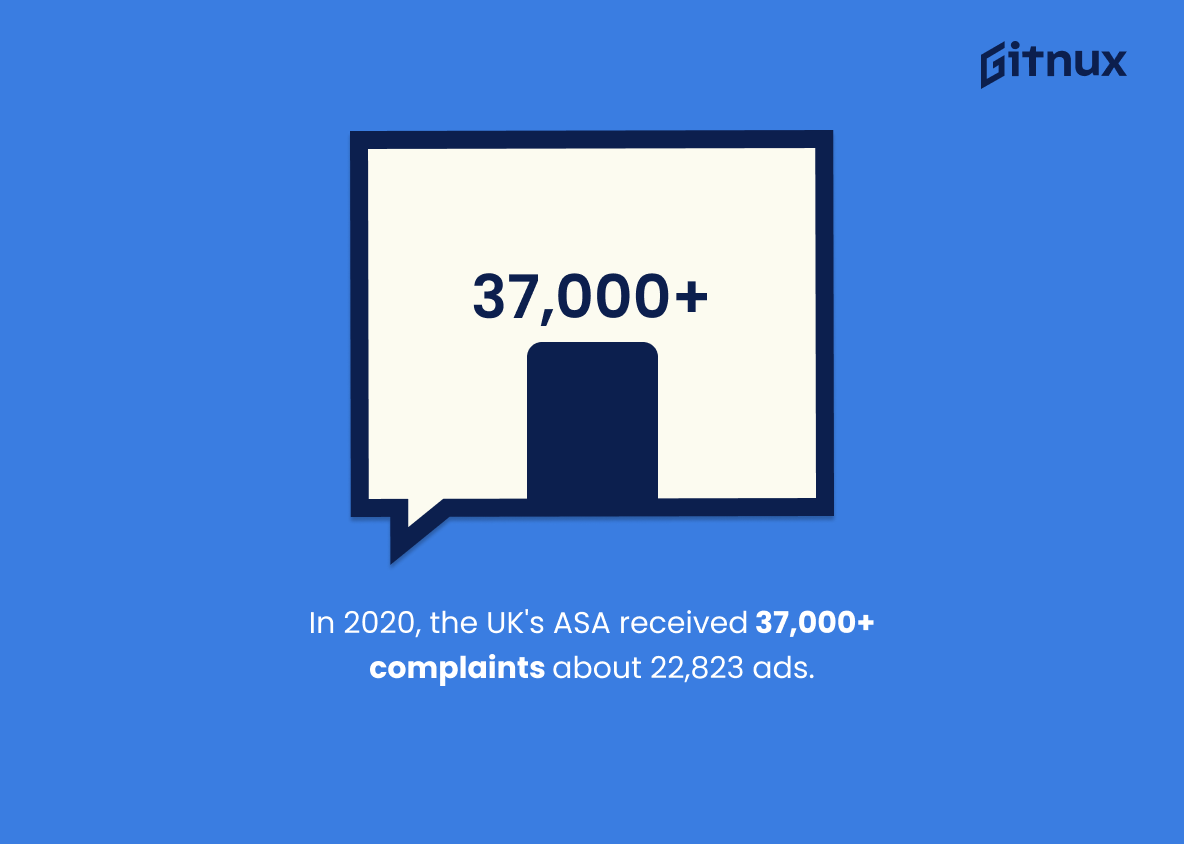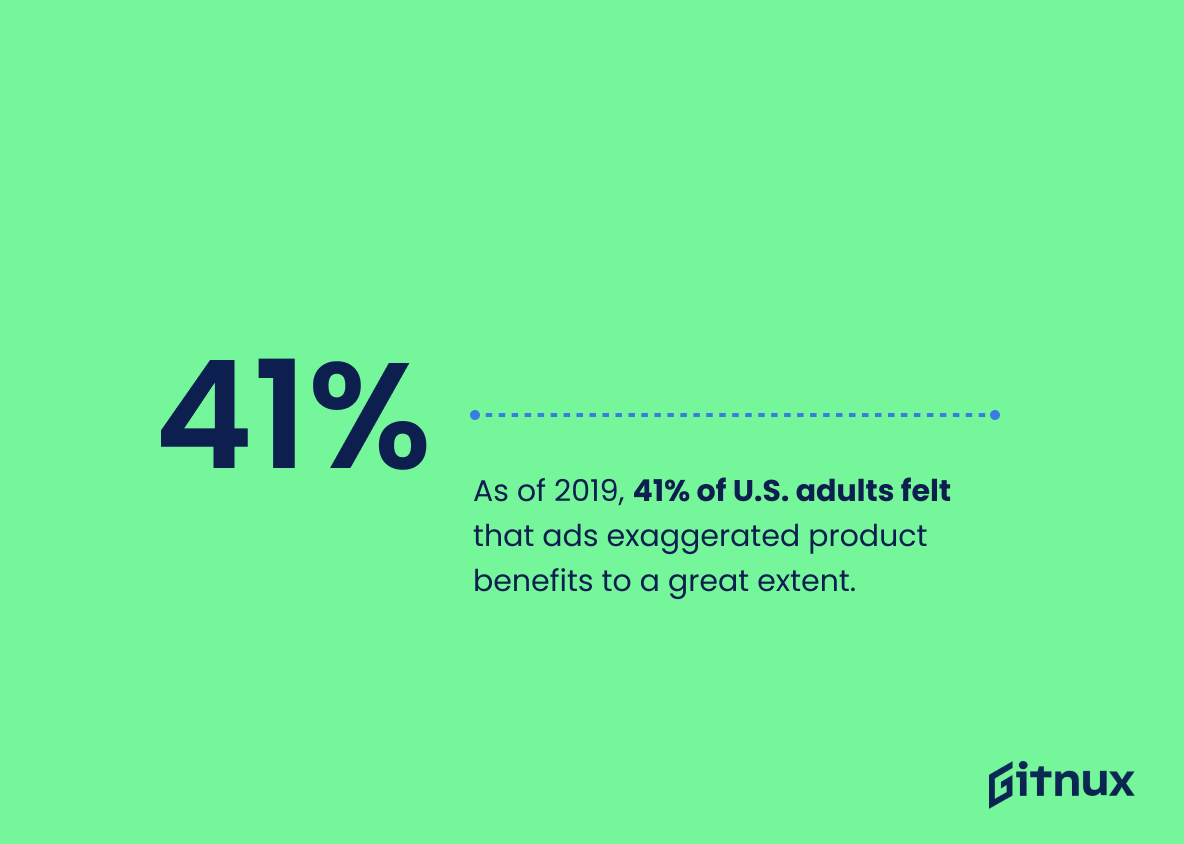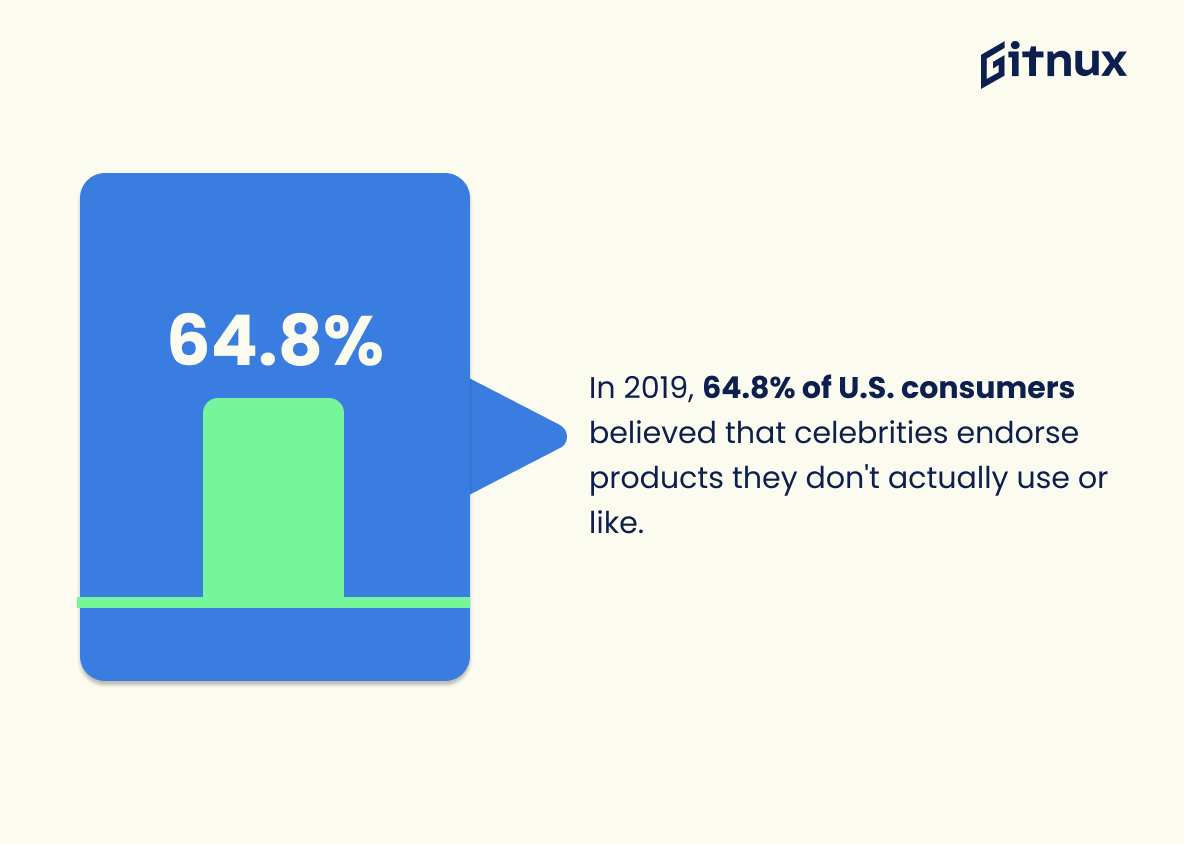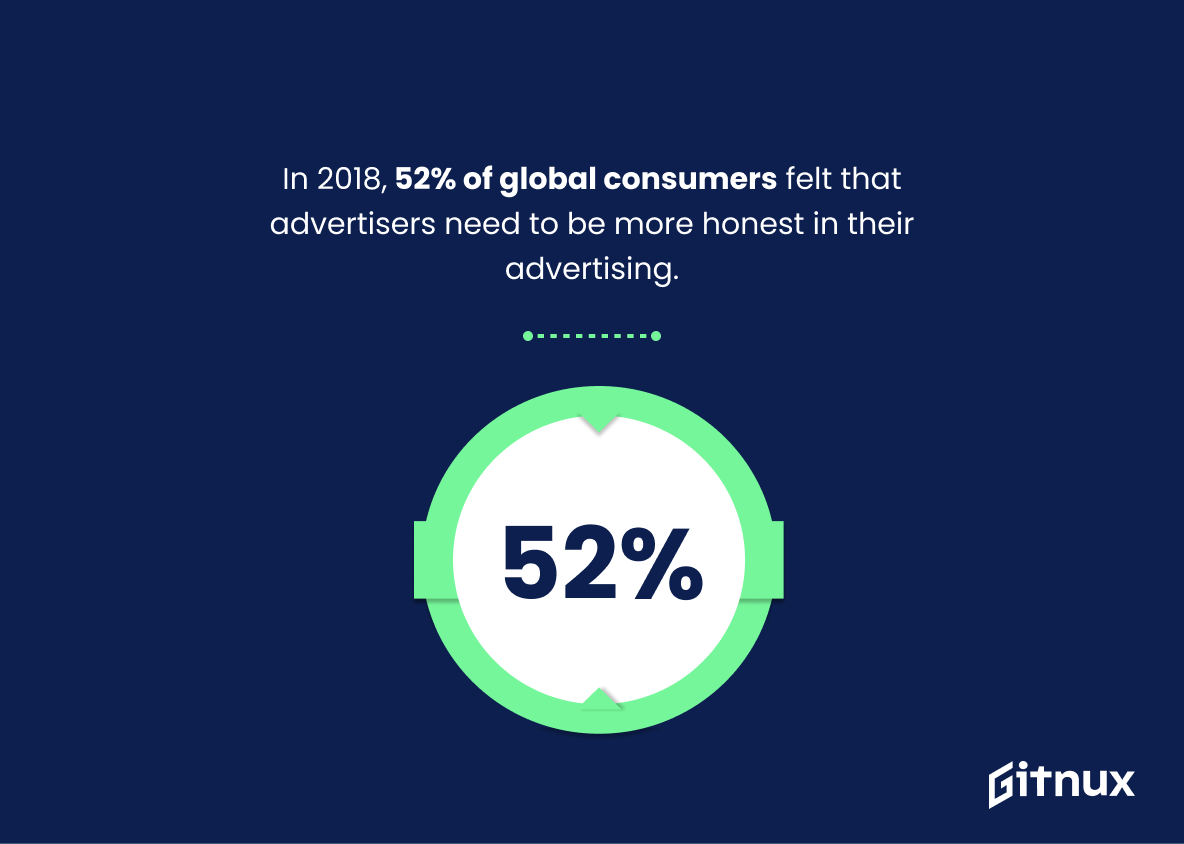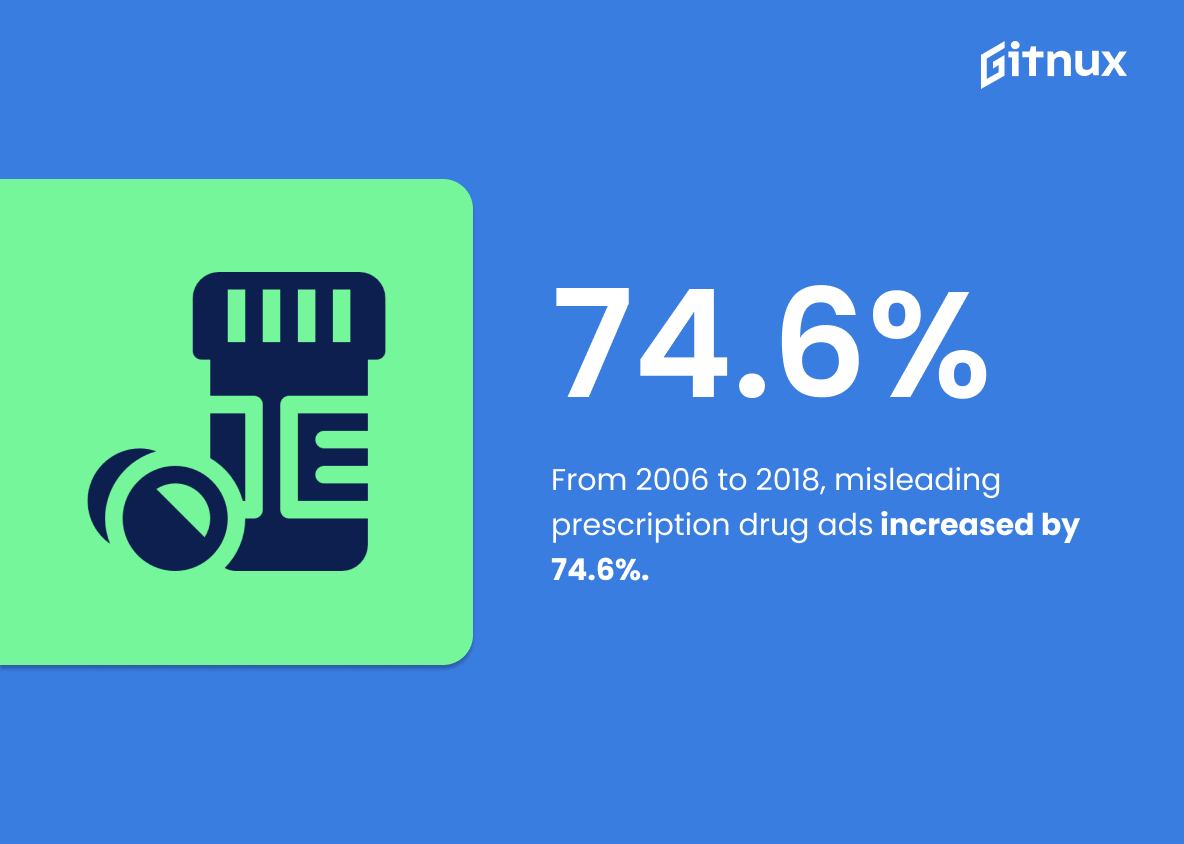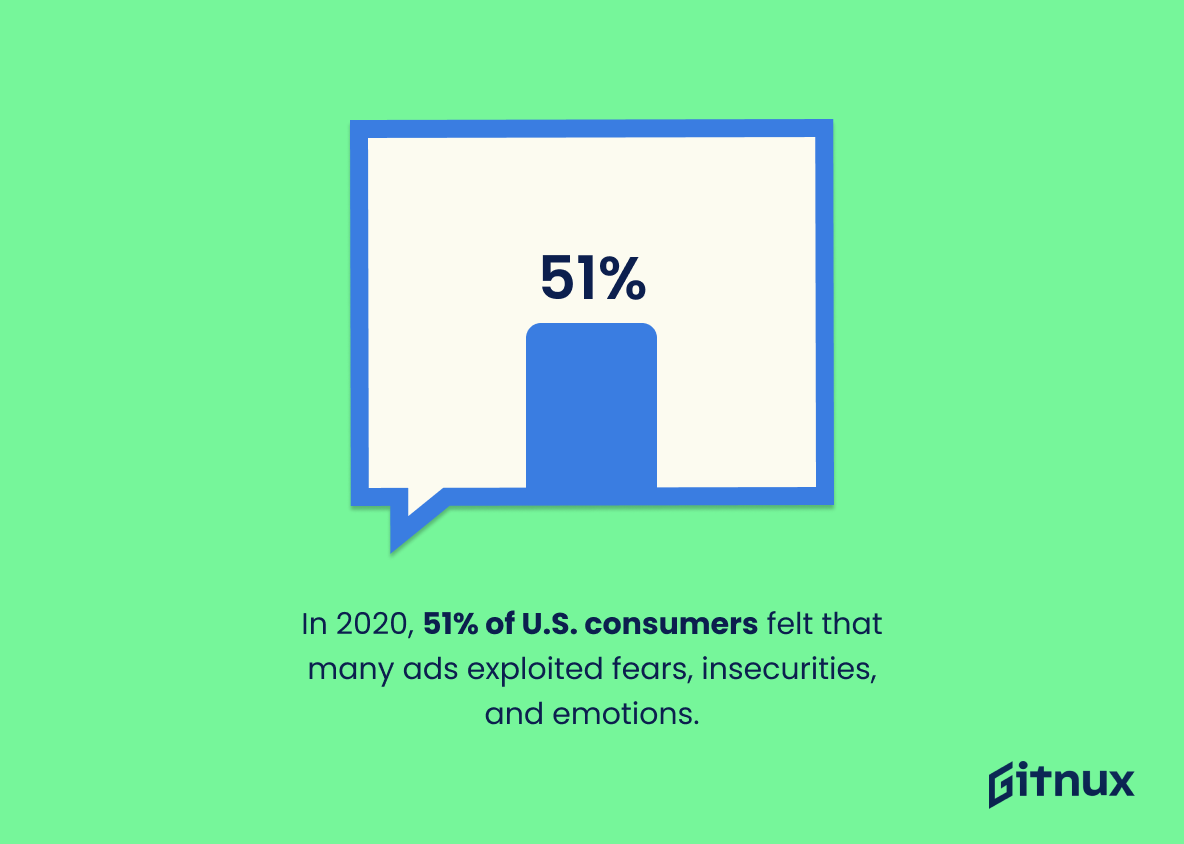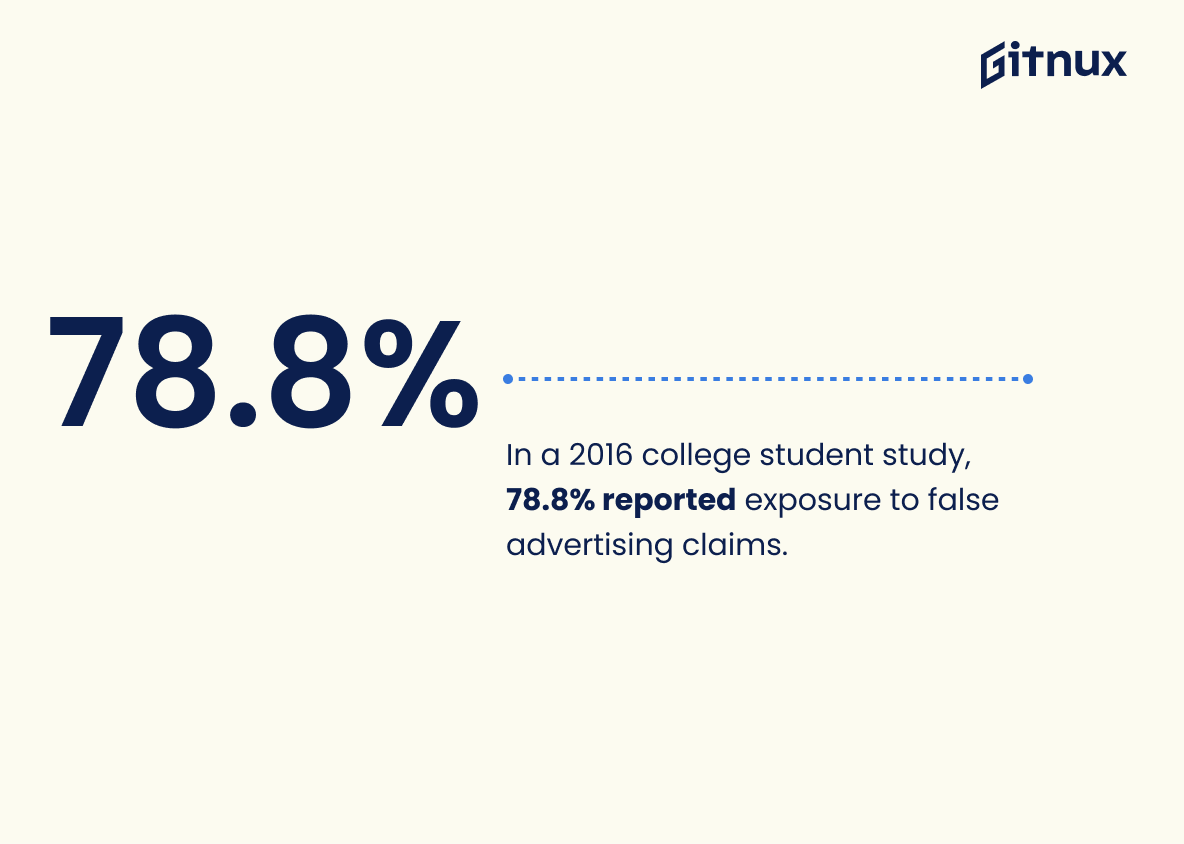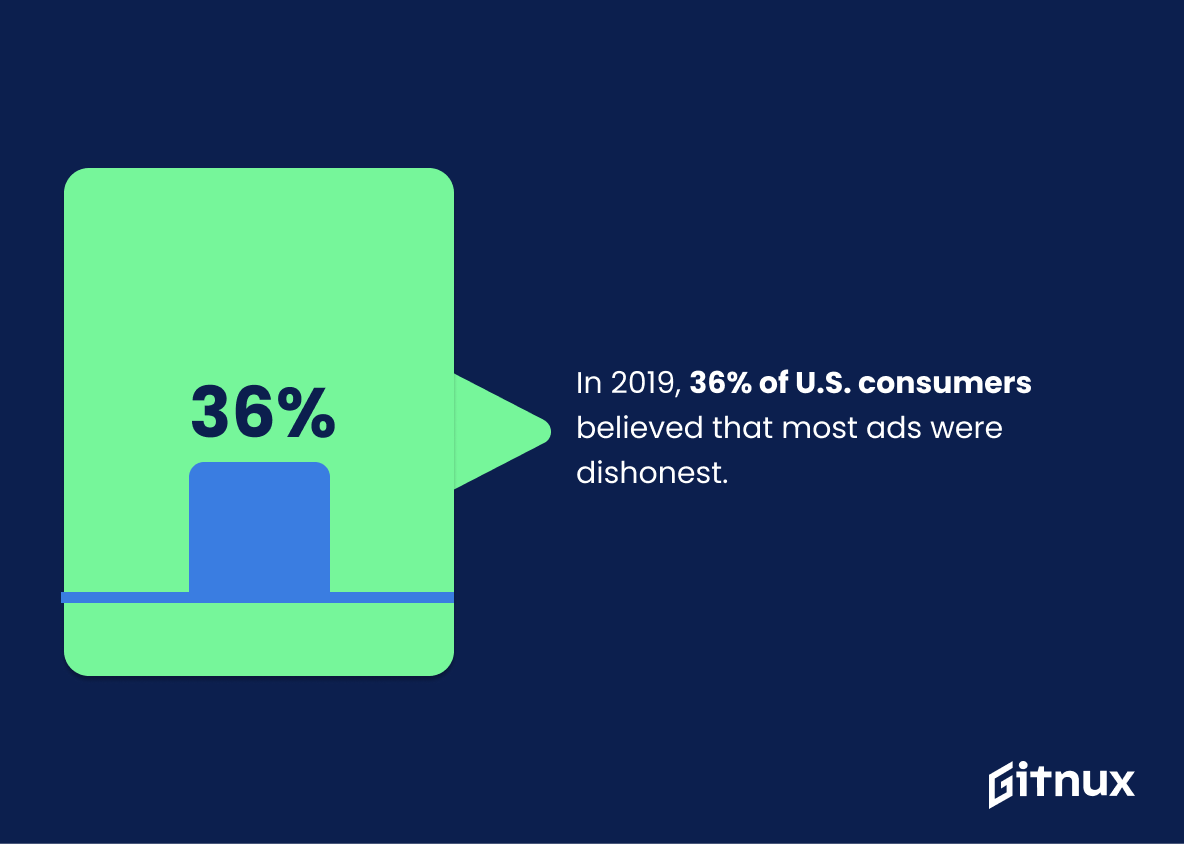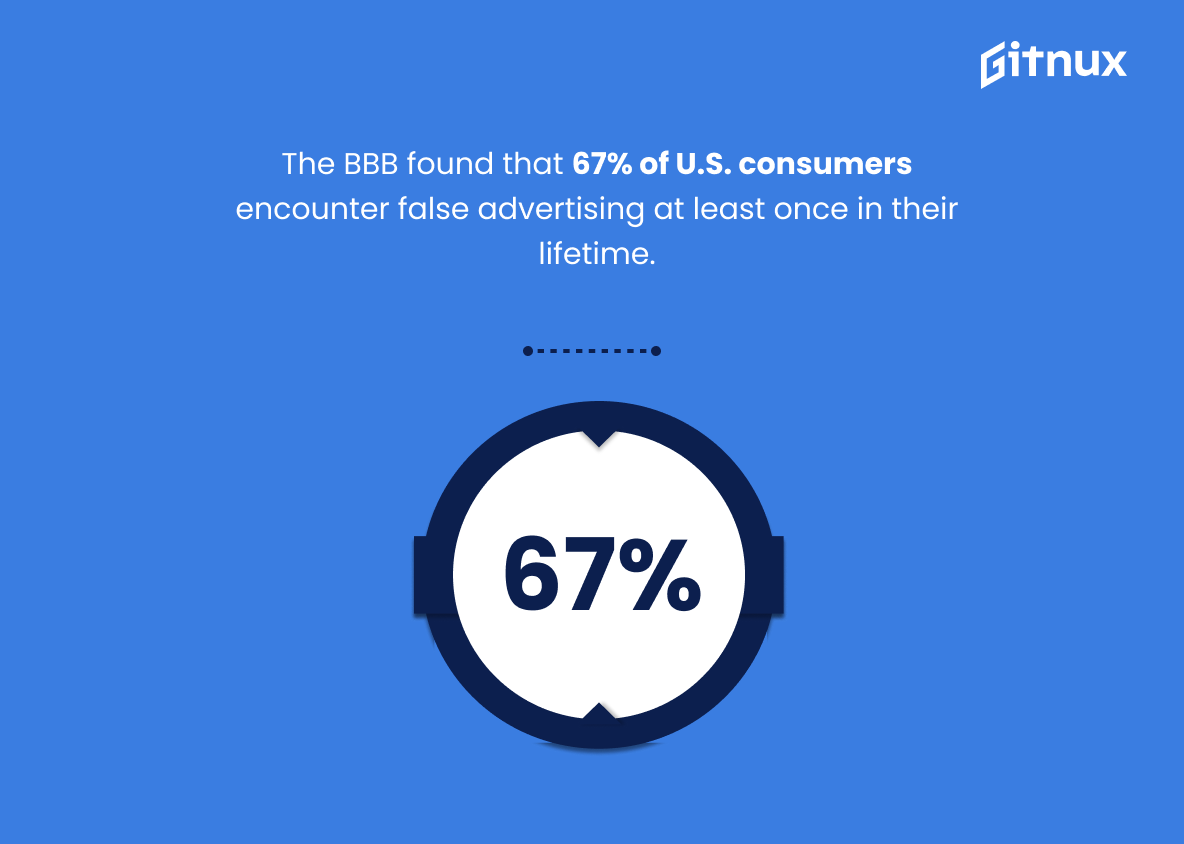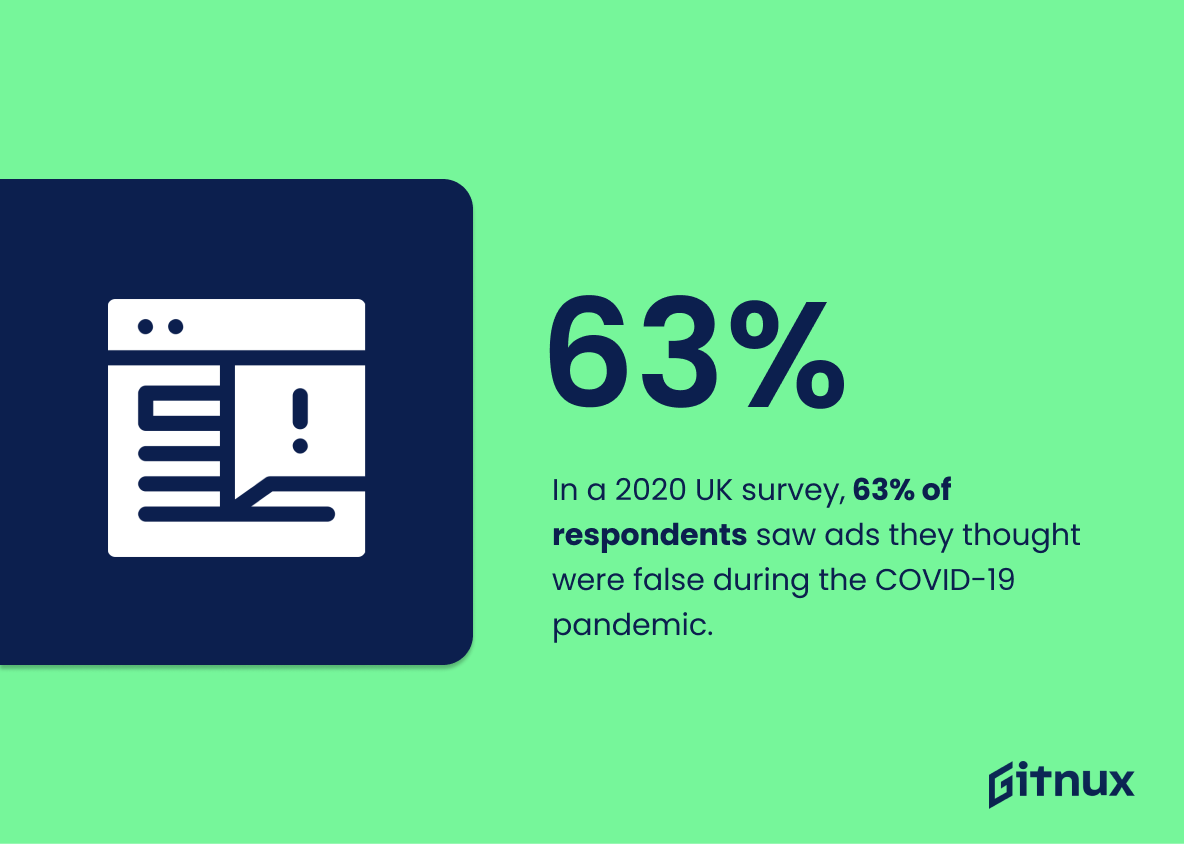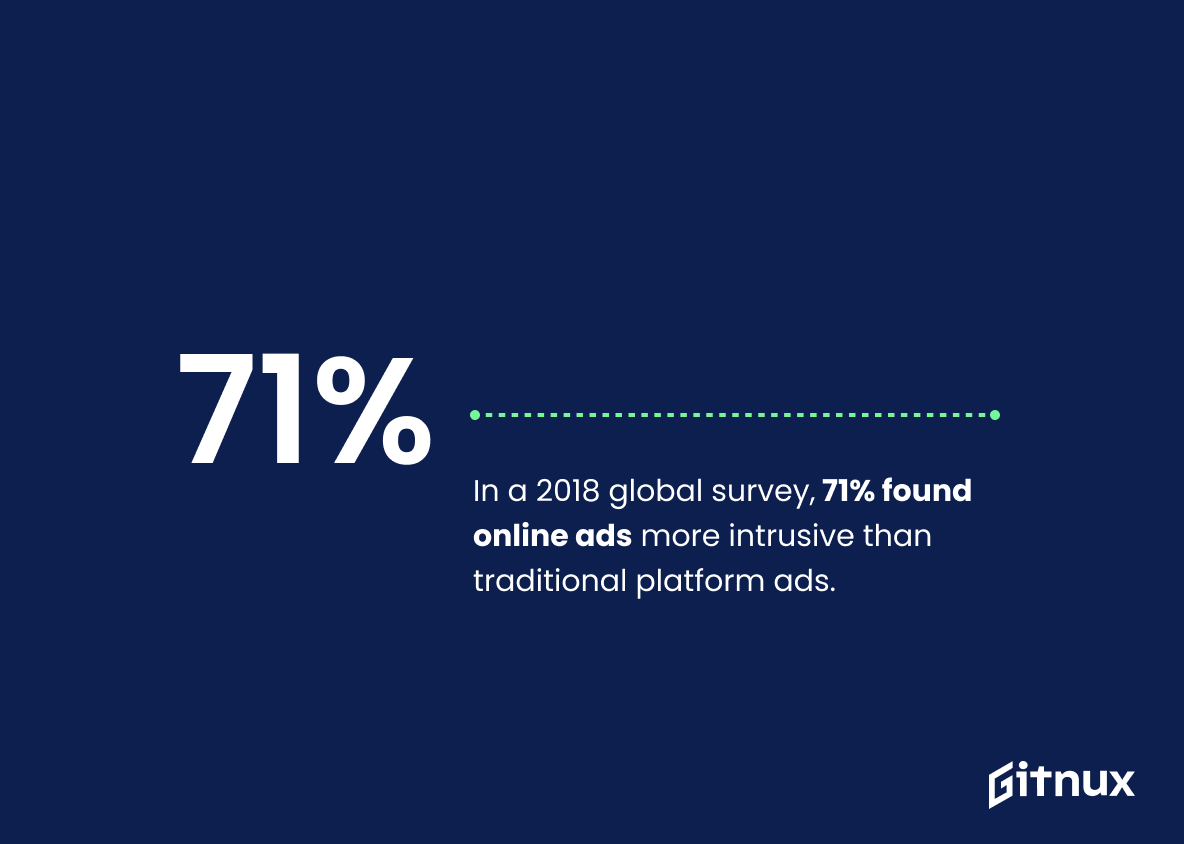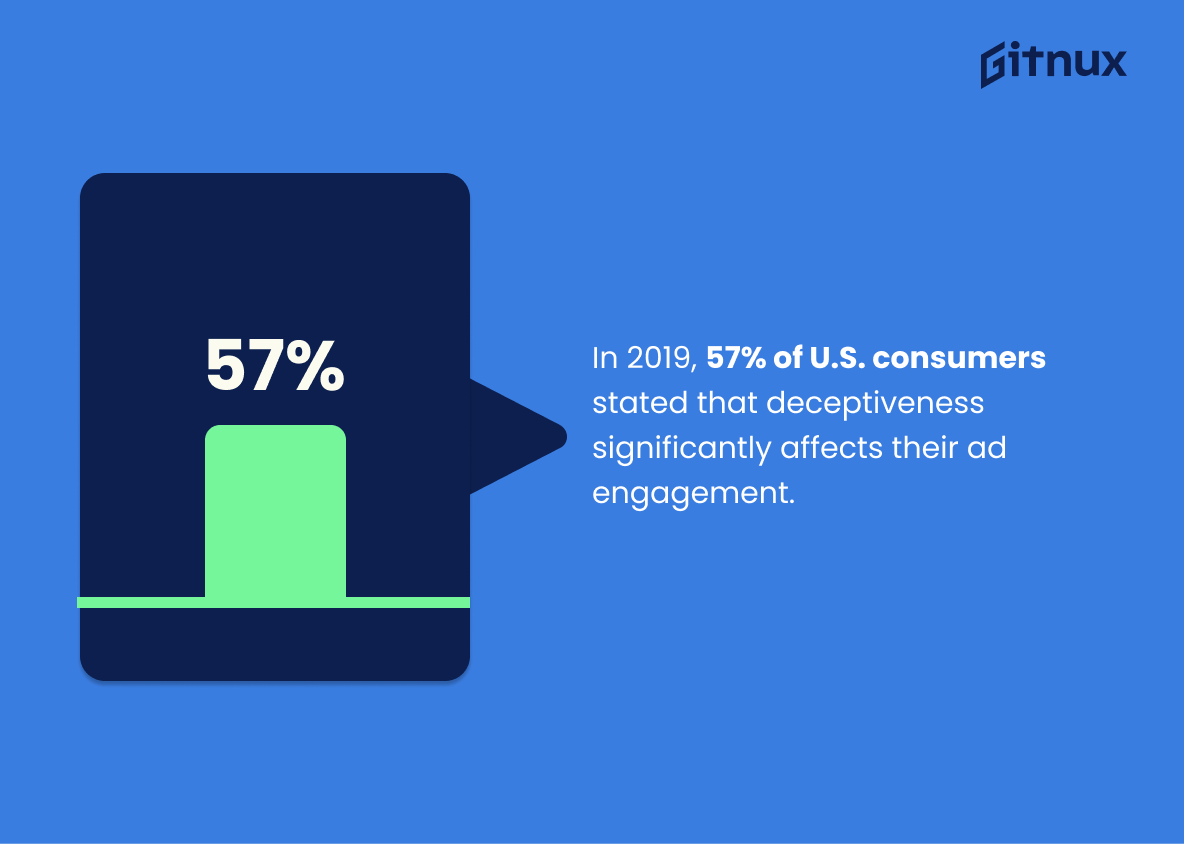False advertising is a pervasive issue in the modern world, and it can have serious consequences for both businesses and consumers. This blog post will explore some of the statistics related to false advertising that demonstrate its prevalence across different platforms.
We’ll look at data from sources such as the Federal Trade Commission (FTC), Advertising Standards Authority (ASA) in the UK, National Center for Biotechnology Information, Better Business Bureau (BBB), Civic Science, Marketing Charts, Statista and more. By examining these figures we can gain insight into how false advertising affects people’s purchasing decisions and trust levels when engaging with advertisements.
False Advertising Statistics Overview
In 2018, 34% of consumers said that they had purchased a product or service with a false advertising claim at least once.
This statistic is a stark reminder of the prevalence of false advertising in our society. It highlights the fact that a significant portion of consumers have been duped into buying a product or service based on false claims, demonstrating the need for greater consumer protection and awareness.
During 2020, the Advertising Standards Authority (ASA) in the UK recorded over 37,000 complaints related to 22,823 ads.
This statistic is a stark reminder of the prevalence of false advertising in the UK. It highlights the sheer number of complaints made to the Advertising Standards Authority in 2020, with over 37,000 grievances lodged against 22,823 ads. This is a clear indication that false advertising is still a major issue in the UK, and one that needs to be addressed.
As of 2019, 41% of U.S. adults felt that ads exaggerated product benefits to a great extent.
This statistic is a stark reminder of the prevalence of false advertising in the United States. It highlights the need for consumers to be aware of the potential for exaggeration in product benefits and to be vigilant in researching the claims made by companies. It also serves as a warning to companies to be honest and transparent in their advertising practices.
2019 data shows that 64.8% of U.S. consumers believe that celebrities endorse products they don’t personally like or use.
This statistic is a stark reminder of the prevalence of false advertising in the U.S. It highlights the fact that many consumers are aware of the deceptive tactics used by companies to promote their products, yet they still trust the endorsements of celebrities. This statistic is a powerful indicator of the need for greater transparency and accountability in the advertising industry.
In 2018, 52% of global consumers felt that advertisers need to be more honest in their advertising.
This statistic is a powerful indicator of the public’s opinion on the current state of advertising. It shows that a majority of consumers feel that advertisers need to be more honest in their advertising, which is a strong indication that false advertising is a major issue. This statistic is an important piece of evidence to include in a blog post about false advertising statistics, as it provides a clear indication of the public’s opinion on the matter.
In a study conducted by the National Center for Biotechnology Information, misleading advertisements for prescription drugs were 74.6% more frequent in 2018 compared to 2006.
This statistic is a stark reminder of the prevalence of false advertising for prescription drugs, which has grown exponentially in recent years. It serves as a warning to consumers to be vigilant when it comes to researching the products they are considering, and to be aware of the potential for misleading information. This statistic is an important piece of evidence in the discussion of false advertising statistics, and should be taken into consideration when making decisions about prescription drugs.
In 2020, 51% of US consumers said that too many ads exploit people’s fears, insecurities, and emotions.
This statistic is a powerful reminder of the impact that false advertising can have on consumers. It highlights the fact that a majority of people feel that ads are taking advantage of their vulnerabilities, and that this is a problem that needs to be addressed. This statistic is an important piece of evidence that can be used to illustrate the prevalence of false advertising and the need for greater regulation and consumer protection.
In a 2016 study among college students, 78.8% of respondents reported that they had been exposed to false advertising claims.
This statistic is a powerful indicator of the prevalence of false advertising in our society. It shows that even among the most educated and informed population, false advertising is still a major issue. This statistic is a stark reminder that false advertising is a pervasive problem that needs to be addressed.
As reported in 2019, 36% of all U.S. consumers believe that most advertisements are dishonest.
This statistic is a telling indication of the public’s perception of advertising. It shows that a large portion of the population is wary of the truthfulness of advertisements, which is an important factor to consider when discussing false advertising. This statistic serves as a reminder that companies must be mindful of how they present their products and services to the public, as a lack of trust in advertising can have a negative impact on their business.
The Better Business Bureau (BBB) reported that 67% of U.S. consumers are exposed to false advertising at least once during their lifetime.
This statistic is a stark reminder of the prevalence of false advertising in our society. It highlights the need for consumers to be aware of the potential for deceptive marketing tactics and to take steps to protect themselves from being taken advantage of. By understanding the prevalence of false advertising, consumers can be better equipped to identify and avoid it. This statistic is an important piece of information for anyone looking to learn more about false advertising and its effects.
In a 2020 UK survey, 63% of respondents reported witnessing what they believed were false advertisements during the COVID-19 pandemic.
This statistic is a stark reminder of the prevalence of false advertising during the COVID-19 pandemic. It highlights the need for consumers to be vigilant and aware of the potential for false advertising, and the importance of researching products and services before making a purchase. This statistic is a powerful illustration of the need for greater regulation and enforcement of false advertising laws, and serves as a reminder of the potential consequences of false advertising.
According to a 2019 U.S. consumer survey, 55% of respondents said they trust print ads more than any other type of ads.
This statistic is a telling indication of the public’s perception of print ads, and it is an important piece of information to consider when discussing false advertising statistics. It suggests that the majority of consumers still have faith in print ads, despite the prevalence of false advertising in the industry. This statistic is a valuable insight into the public’s trust in advertising, and it can be used to inform discussions about false advertising and its effects on consumer trust.
In a 2018 global survey, 71% of respondents felt that online ads are more intrusive compared to ads on traditional platforms.
This statistic is a powerful indicator of the public’s opinion on online advertising, and as such is a key piece of evidence in any discussion of false advertising statistics. It shows that the majority of people feel that online ads are more intrusive than those on traditional platforms, suggesting that false advertising is more likely to be encountered online. This is an important point to consider when discussing the prevalence of false advertising.
As of 2019, 57% of U.S. consumers claim deceptiveness significantly influences their likelihood of engaging with an advertisement.
This statistic is a powerful indicator of the impact of false advertising on consumer behavior. It shows that a majority of consumers are aware of deceptive advertising and are taking steps to avoid it. This is an important point to make in a blog post about false advertising statistics, as it demonstrates the need for businesses to be honest and transparent in their advertising practices.
Conclusion
The statistics presented in this blog post demonstrate the prevalence of false advertising and its impact on consumers. From FTC cases to consumer surveys, it is clear that deceptive claims are widespread across all types of media platforms. Consumers have become increasingly aware of these practices, with many expressing distrust towards ads and feeling deceived by them. As a result, businesses must be more transparent when creating advertisements or risk losing their customers’ trust altogether.
References
0. – https://www.comforteagle.com
1. – https://www.learningsignal.com
2. – https://www.ftc.gov
3. – https://www.marketingcharts.com
4. – https://www.statista.com
5. – https://www.researchgate.net
6. – https://www.ncbi.nlm.nih.gov
7. – https://www.marketingsherpa.com
